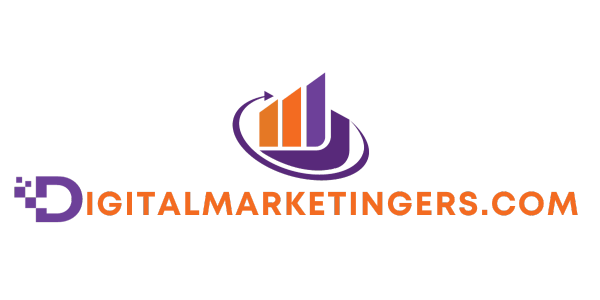The Next Five Years of Digital Marketing Trends

Digital marketing is a way to market online to reach your target audience and potential customers. Digital marketing includes email, social media and paid search. For greater reach and a positive brand image, a successful digital marketing strategy targets key user platforms.
Digital marketing has taken over traditional marketing by using innovation, digitization and modern marketing tools. Digital marketing trends are evolving at an accelerating rate due to technological advances, changing consumer behavior and massive data.
So what does the future hold?
It is no surprise that consumer preferences and needs are changing. This means there is a need to develop new marketing strategies. Innovative ideas and technology are required to implement competitive marketing strategies for audience engagement, lead generation, conversion, and other functions.
This article focuses on how these advances will be incorporated into futuristic digital marketing campaigns. Let’s get started!
1. Augmented Reality (AR).
Augmented reality (AR), a growing trend in digital marketing strategy, is becoming a popular option. This allows businesses to offer customers unique experiences via their smart phones. AR ads can be immersive, which allows digital marketers to build an emotional connection with customers. Customers can interact with AR ads and experience augmented shopping, which is a better experience than online banners, images and ads.
2. Artificial Intelligence (AI).
Artificial Intelligence (AI), which simulates human intelligence, is a form of artificial intelligence that uses machines and computers to recognize speech and process natural language by machines and computers. It has already changed digital marketing techniques and trends. AI can speed up optimization of many marketing activities, improving user experience and driving conversions. To create high-quality, original content for social media and websites, digital marketers turn to AI content generators. AI can be used to support SEO and marketing site professionals to personalize customer experiences, predict consumer behavior, customize ads, and tailor advertisements.
Social media platforms use AI to tailor relevant ads for user search patterns.
3. Chatbots for Personal Service
Chatbots are software programs that allow customers to communicate with businesses online using chat over text or voice. They can quickly respond to customer questions and decrease response times. Chatbots can be used to quickly respond to customer queries and address common questions.
Small businesses can program chatbots that respond to customer questions and refer customers to the right person in complex cases. This saves time and money.
4. Influencer Marketing
An influencer is someone who has a large fan base on social media.
Influencer marketing is a rising trend that is expected to grow to become a $2.85billion market in 2025. Influencers are able to inspire and persuade large audiences, which is why brands use them for their product promotion. These promotions are paid and involve collaboration between both parties. Influencer marketing includes celebrity endorsements and recommendations.
5. Marketing with User-Generated Content
User-generated content (UGC), is content that consumers create about your products and services. It is important not to confuse it with influencer marketing as the latter is sponsored.
User-generated content creators are not brand ambassadors or company-hired influencers. Social media allows consumers to share honest reviews. This is a growing trend, as the global market for user-generated content will reach $13.7 Bn in 2027. UGC can increase brand awareness and help digital marketers build trust with their audience.
6. Omnichannel Integration
Omni-channel integration is a combination of multiple marketing platforms and ensures a seamless customer experience. Omnichannel Integration has the ultimate goal to provide a consistent brand experience.
Omnichannel marketing is a method used by digital marketers to communicate consistent brand messaging across multiple media. Based on the interaction of the consumer with the brand, personalized messages will be sent. The type of ads that customers see will depend on their customer behavior. Global retail omnichannel markets are expected to grow to $16.9 billion by 2027, a huge increase from $5.8 Bn in 2020.
7. Video Marketing
Video marketing refers to the promotion of products and services by using video messaging. Videos can increase audience engagement, brand awareness, and educate potential clients through a dynamic medium. With interactive messaging and detailed product guides, videos help customers better understand your products.
Video content that is compelling and engaging can increase conversion rates, reach audiences, and give your brand a competitive advantage. Video content analysis is used by digital marketers to track and analyze consumer engagement and reach. In the next five-years, video marketing will have a global reach reaching $391.1 billion.
8. Enriched Gen-Z Experience
Generation Z is a term that refers to people born between 1990-2010. These people are tech-savvy and digitally savvy. This group makes up nearly one-third the world’s population, with 2.56 billion members. This is an enormous consumer segment that digital marketers can tap into.
Gen-Z is more interested in experience than products when digital marketers approach them. GenZers value more than a physical product, so they prefer brands that encourage self-expression. This is why digital marketers have the potential to engage and connect with this group.
9. Marketing Personalized
To create customized ads, we look at the user’s browsing history and other interests in order to send them relevant messages and products that they are interested in. Brands can personalize their customer data to track their preferences, needs and interests. To suggest similar products, brands collect search data from consumers and analyze browsing patterns.
Digital marketers use personalized marketing across multiple platforms to engage customers. Individual consumer behavior is reflected in all marketing channels including social media, instant messaging, marketing email, and video suggestions.
Last Thoughts
The digital marketing industry is expanding rapidly and is predicted to grow to $786.2 billion by 2026. Digital marketing techniques and practices are being transformed by technological innovations. To enhance the user experience, brands incorporate interactive chatbots, artificial intelligence, and augmented reality. UGC and influencer marketing drive customer engagement and increase brand awareness. To create brand consistency, digital marketers use multiple channels, including personalized marketing, omnichannel and video marketing. Marketers have a lot of potential to tap into Generation Zalso in the near future. To win customer trust, brands must protect consumer data.
Read More: Naa Songs




